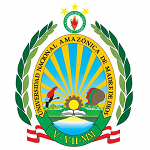Diversity, structure and health status of Huarangales forest populations in the Ica valley, southern Peru
Diversidad, estructura y estado sanitario de las poblaciones de los bosques de Huarangales en el valle de Ica, sur peruano
DOI:
https://doi.org/10.55873/gentryana.v2i1.245Keywords:
Prosopis, Algarrobo, Deforestation, RichnessAbstract
The populations of Neltuma (Fabaceae), trees known as “huarango” in the Ica Valley, have been severely decimated in recent years, to the point that today only small remnants and historical data are known. In the present study, the diversity, structure and health status of the woody flora of five localities associated with huarangales forests was evaluated. To do this, we installed 5 plots of 20 x 50 m, two in the district of Los Molinos (Bocatoma and Trapiche), one in the district of Rosario de Yauca and two in the district of Ocucaje (Callango). Woody individuals with DBH ≥ 2.5 cm were evaluated, considering variables of height (m), health and phenological status. It was possible to identify 4 families, the most representative being: Fabaceae with 3 species, Asteraceae (2 sp.), with a total of 7 species, of which the most abundant were: Acacia macracantha (16 individuals), Neltuma chilensis (13), Neltuma limensis (10) and Bulnesia retama (5). The structure is represented by individuals with DBH between 13 to 25 cm and heights between 2 to 4 meters. The analyzes of the health status show that the populations mainly of Neltuma chilensis and Neltuma limensis have some degree of affectation, mainly on the trunks and leaves, with red fly larvae and lepidopterans being the main parasites. These results show the delicate and extremely worrying situation of these huarango populations, which urgently need measures to recover these species of great social and ecological importance in the Ica valley.
References
Borujerdi, E. y Zegarra, R. (2004). Evaluación de la variabilidad morfológica de Neltuma chilensis en la región de Tacna y su relación con los factores ecológicos del medio desértico. Ciencia & Desarrollo, 8 (1), 107 - 115. DOI. https://doi.org/10.33326/26176033.2004.8.156
Condit, R., Pitman, N., Leigh, E.G., Chave, J., Terborgh, J., Foster,R.B. et al. (2002) Beta-diversity in tropical Forest trees. Science,295(5555).
Hughes CE, Ringelberg JJ, Lewis GP, Catalano SA (2022). Disintegration of the genus Prosopis L. (Leguminosae, Caesalpinioideae, mimosoid clade). In: Hughes CE, de Queiroz LP, Lewis GP (Eds) Advances in Legume Systematics 14. Classification of Caesalpinioideae Part 1: New generic delimitations. PhytoKeys 205: 147-189.
Juárez, N. & González, U. (2020). Lista taxonómica actualizada de los insectos asociados a Prosopis pallida (Humb. & Bonpl. ex. Wild.) Kunth (Fabaceae) de la región Piura, Perú. Graellsia, 76 (2): 1-57. https://doi.org/10.3989/graellsia.2020.v76.263
Lazo, J. (2018). La edad de los árboles de Neltuma limensis Benth en el Santurio histórico Bosque de Pomac – Lambayeque. (Tesis de Maestría). Universidad Nacional “Agraria La Molina”. Lima. Recuperado de http://repositorio.lamolina.edu.pe/handle/20.500.12996/3804
Macía, M. J. (2008). Woody plants diversity, floristiccomposition and land use history in the Amazonianrain forests of Madidi National Park,Bolivia. Biodiversity and Conservation 17: 2671–2690
Marqués de Villacurí, (2018). Plantas Medicinales. 2: El Molle - El Huarango. Ediciones “Anfiti” Ica, Perú.
Marqués de Villacurí, (2019). El Huarango : Etimología - Descripción Botánica, Utilidad . Poesías - Canciones. Sérvulo Gutierrez y el Huarango Parque Ecológico “Golda Maier”Ediciones “Anfiti” Ica, Perú.
Mostacero, J. , Mejía, F. , Zelada, W. y Medina, C, (2007). Biogeografía del Perú. Biblioteca Nacional del Perú N° 2007 - 12623.
Ordenanza Regional Nº 0006-2017-GORE-Ica. (2017, 24 de marzo). Diario el Peruano. N° 14027.
Pardo, J., Pardo, E. (2004). Ica sus Hombres y sus Leyendas. Documental I Parte. Editorial Escuela Nueva.
Peñaherrera, C. (1969). Geografía general del Perú. Sínteses. Tomo I-Aspectos físicos. Derechos reservados. Lima.
Ramírez – Padilla, B. y Goyes. R. (2004). Botánica. Generalidades, Morfología y Anatomía de las Planta superiores. Recuperado de https://www.researchgate.net/publication/305566736_Botanica_Generalidades_Morfologia_y_Anatomia_de_plantas_superiores.
R Core Team. (2023). R: A language and environment for statistical computing. R Foundation for Statistical Computing, Vienna, AT. https://www.R-project.org/.
Servicio Nacional Forestal y de Fauna Silvestre (2022). Guía para la identificación de insectos asociados al algarrobo Prosopis pallida (Humb. & Bonpl. ex Willd.) Kunth. Volumen I: Tumbes.
http://repositorio.serfor.gob.pe/handle/SERFOR/924
Thirakul, S. (1998). Manual de Dendrología del Bosque Latifoliado. Recuperado de chrome-extension://efaidnbmnnnibpcajpcglclefindmkaj/viewer.html?pdfurl=http%3A%2F%2Fwww.itto.int%2Ffiles%2Fitto_project_db_input%2F2017%2FTechnical%2Fpd8-92-4%2520rev2(F)%2520s%2520pg1-169_Manual%2520de%2520Dendrolog%25C3%25ADa_S.pdf&clen=38042754&chunk=true
Torrez, V., P. M. Jørgensen & M. J. Macía. 2010. Ladiversidad alfa y beta en relación a variablesabióticas en un bosque seco. pp. 217–234. In: S. G.Beck, N. Paniagua-Zambrana, R. P. López. & N.Nagashiro (eds.) Biodiversidad y Ecología en Bolivia:simposio de los 30 años del Instituto de Ecología.Instituto de Ecología, Universidad Mayor de San Andrés, Bolivia.
Traversa, I. y Alejano, M. (2013). Caracterización, distribución y manejo de los bosques nativos en el norte de Uruguay. Revista Mexicana de Biodiversidad 84, 249 – 262. DOI. 10.7550/rmb.23314.
Vásquez, L.; Escurra, J. y Huamán, A. (2010). Los Algarrobos del Perú. Infoagro, Lambayeque- Perú.
Weberbauer, A. (1945). El mundo vegetal de los andes peruanos. Ministerio de agricultura, Lima- Perú.
Whaley, O, Borda C, Moat J, Wilkinson T, Bravo A, Gagné R, 2020. Ecología y diagnóstico de Enallodiplosis discordis (Diptera:Cecidomyiidae): un nuevo defoliador feroz con repercusiones directas en la pérdida del bosque seco de Prosopis y los medios de vida en Perú. Revista peruana de biología 27(3): 451 - 482. doi: http://dx.doi.org/10.15381/rpb.v27i4.19200

Published
How to Cite
Issue
Section
License
Copyright (c) 2023 Zoila Magaly Cuba-Cordova, Daniela Loayza-Vargas, Isau Huamantupa-Chuquimaco

This work is licensed under a Creative Commons Attribution 4.0 International License.
The authors, knowing that the GENTRYANA journal has an Open Access policy (Open Access) accept the conditions of the Creative Commons Attribution 4.0 International LICENSE (CC BY 4.0).







